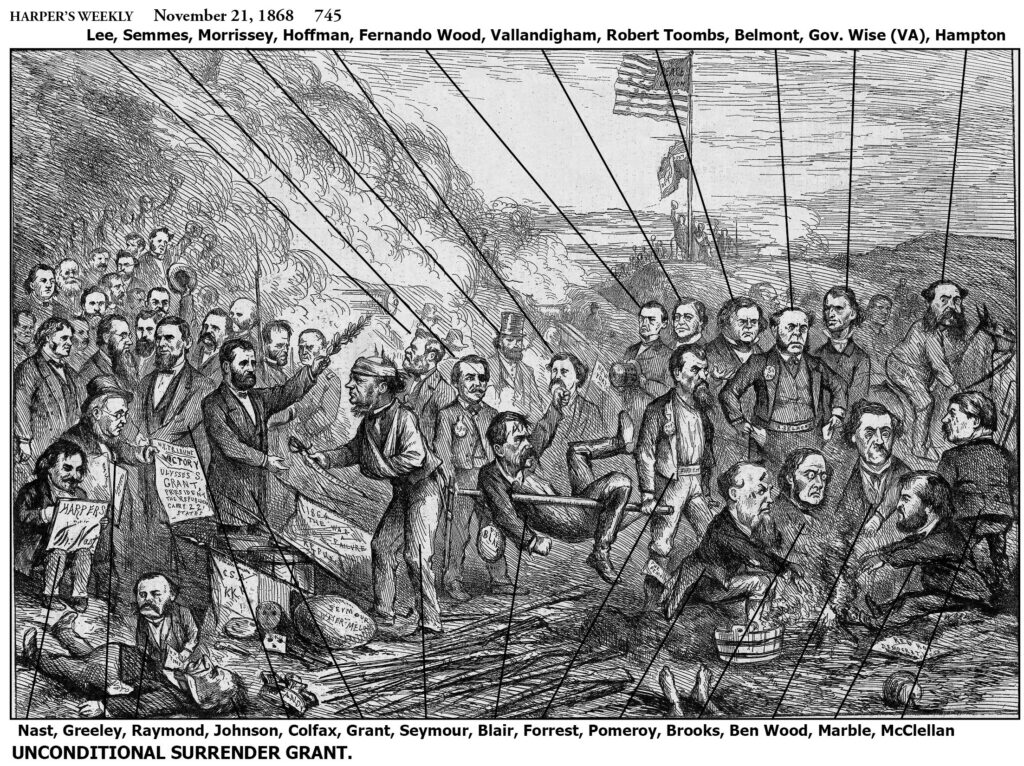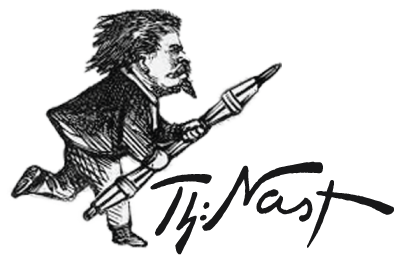
Nast’s joyous cartoon was available to readers eight days after the 1868 election. He was still sketching while behind him, Greeley was peddling his paper. In the rear, the “Peace (and) Union” stripes replaced the tattered Lost Cause banner.
Unconditional Surrender Grant held an olive branch over Seymour’s head as the defeated candidate, his left arm in a sling, handed over his Lost Cause sword. In contrast, a still-defiant Blair was carried off in a litter by Forrest and Semmes, with Lee behind him watching Grant. Hampton was on his horse, about to scurry away.
A gleeful Nast obviously enjoyed tweaking the losing press. Below him, Raymond consoled a prostrate King Andy, his crown off and a veto sticking out of his pocket. Opposite, “Red Hot” Brick Pomeroy was cooling his feet in a bucket, while he, James Brooks (Express), Ben Wood (Daily News) and Manton Marble (World) considered what to do next. Belmont observed in a distressed, contemplative pose; afterwards, he was attacked with anti-Semitic slurs as a scapegoat for Democratic losses in the last three elections, but retained his post through the next one.
For Nast, the 1868 election was as much a winning referendum on the outcome of the Civil War as the 1864 contest had been. His tactics were similar: Eighteen cartoons attacked the Democrats from several directions, while seven were positive and four contrasted the two sides. Grant reportedly attributed his victory to “the sword of Sheridan and the pencil of Thomas Nast.”
